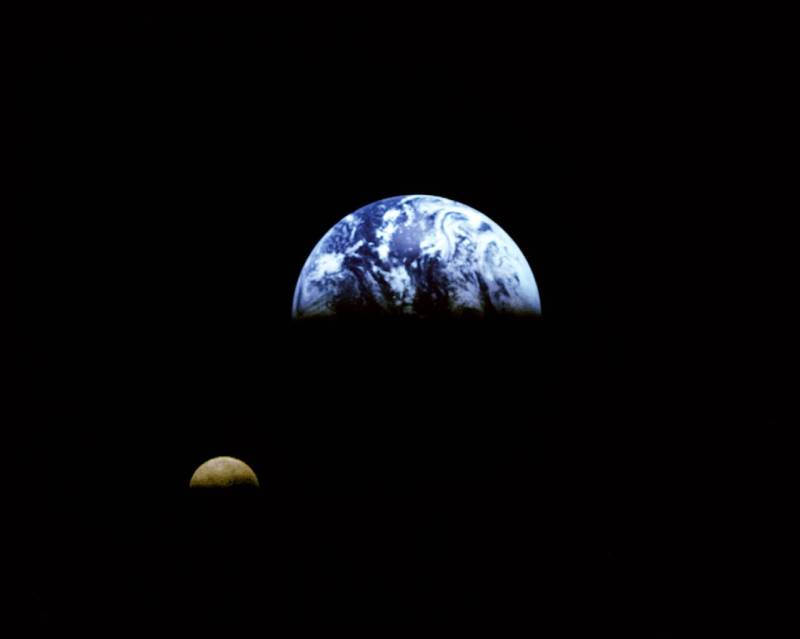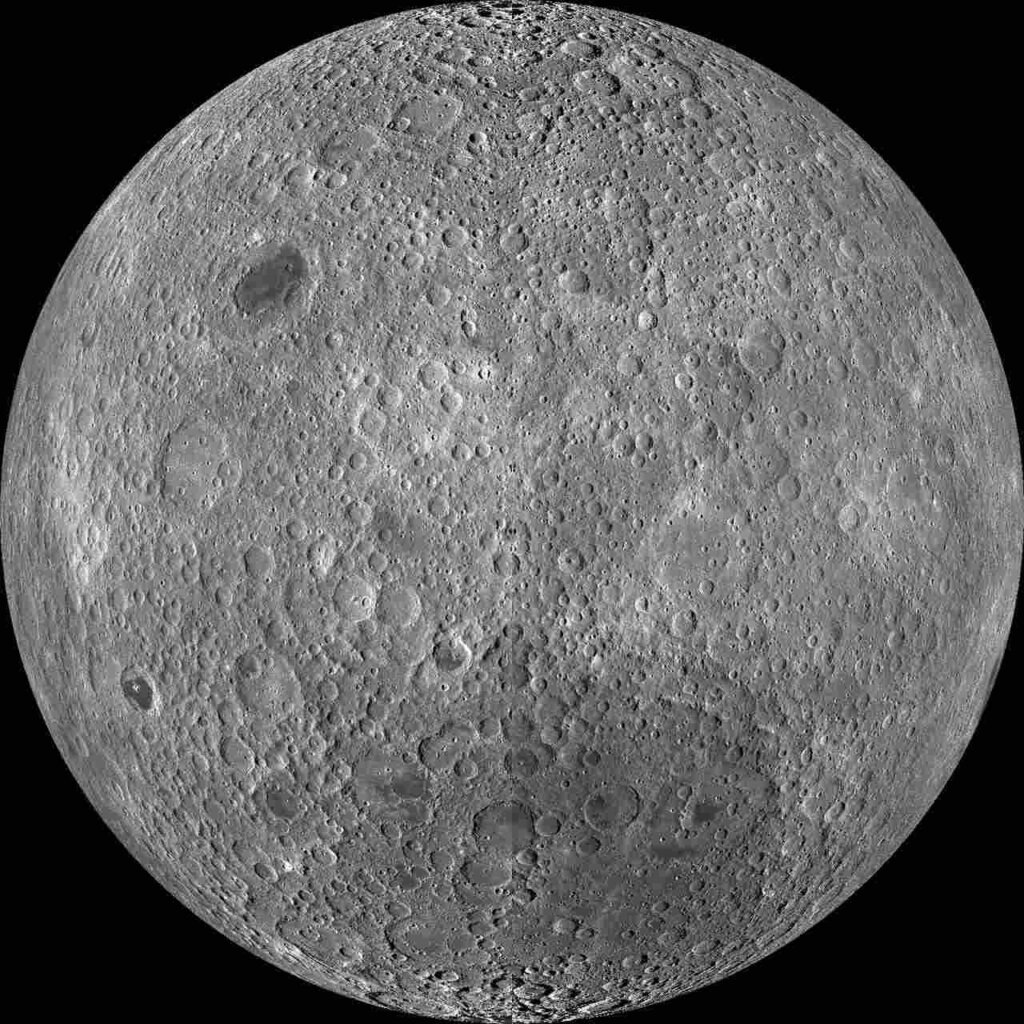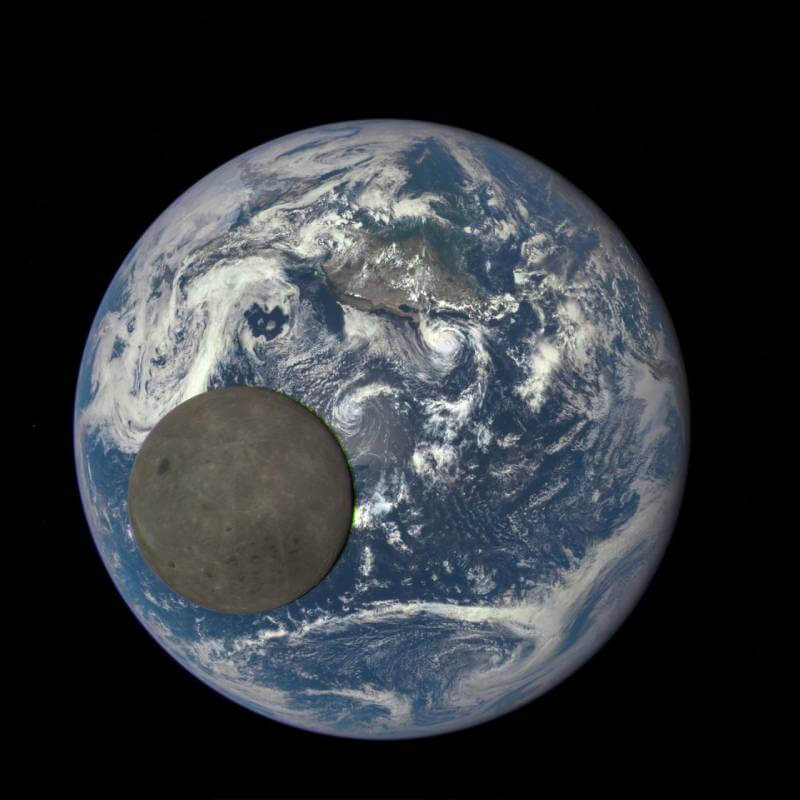As the brightest and biggest object in the night sky, it’s hard not to appreciate the Moon’s presence. Earth’s faithful companion has many intriguing features and even more questions surrounding it. The Moon is the subject of countless studies and research. One question that is commonly asked is, does the Moon rotate?
Scientists have also asked this question, and while studying the Moon and its relation to Earth, they have made discoveries that have answered this question and led to answering many others. Contrary to popular belief, the Moon does rotate, but it rotates in a unique way you may not expect.
Does Moon Rotate Around Earth?
Although it may seem like the Moon is always visible or even stationary, the Moon does rotate around the Earth. However, the Moon rotates in a unique way, a little differently than how the Earth rotates around the Sun. The time the Moon takes to rotate on its axis and the time it takes to complete an orbit around the Earth are the same.

The Moon orbits the Earth while the Earth orbits the Sun. The shape of the Moon’s orbit is not a perfect circle but an ellipse. The shape of the Moon’s orbit means the distance between the Earth and the Moon varies. When the Moon is closest to Earth, it’s called perigee. The Moon’s furthest point from Earth it’s called apogee. The distance between the perigee and apogee is 30,000 miles.
The Moon takes approximately 27 days to fully complete an orbit around the Earth. The time it takes the Moon to orbit around the Earth is approximately one Earth month. Because the duration it takes for the Moon to complete a rotation around the Earth and a rotation on its axis is the same, synchronous rotation happens.
Synchronous Orbit
Synchronous rotation is a natural phenomenon. It’s also a type of tidal locking. Tidal locking is fairly common in the solar system. Most larger moons are tidally locked with their planet. Tidal locking, or synchronous orbit, is when the same side of an object always faces the other object due to gravitational forces.
Tidal locking occurs when a planet’s gravitational force pulls at its Moon, slightly altering its shape to have a bulge similar to a football. The bulge causes the rotation of the Moon to eventually slow, resulting in the Moon becoming tidally locked with its planet in synchronous rotation. Earth and its Moon are tidally locked.

Since we always see the same side of the Moon, it also means there is a side of the Moon we will never see from Earth. The side of the Moon we don’t see, or the far side of the Moon, has some different geological features in comparison to the side we do see, or the near side. The far side of the Moon was first photographed in 1959 by the Luna 3 spacecraft.
Although we see the same side of the Moon from Earth, there are small variations in the rotation of the Moon. Its orbital shape is elliptical, resulting in the distance between the Earth and the Moon varying. It’s this variation in distance that results in lunar librations. The variations known as lunar librations cause approximately 59% of the Moon to be visible to us, not just 50%.
Does the Moon Rotate on its Axis?
While looking at the Moon you might have noticed that the same side is always facing Earth. It’s because of this the myth that the Moon does not rotate began. Although it’s true that the same side of the Moon always faces the Earth, the Moon does rotate on its axis.
The Moon rotates on its axis just as Earth does. The difference between the Moon’s rotation on its axis and the Earth’s rotation is the time it takes to complete one rotation. Compared to Earth, the Moon rotates at a fairly slow rate of speed. The Moon takes 27 Earth days to rotate on its axis.
The Moon’s rate of rotation is much slower than Earth’s. It takes the Moon the same amount of time to complete one rotation around the Earth as it does for the Moon to complete a full rotation on its axis.
The synchronous rotation is the reason that the same side of the Moon always faces the Earth. The other side of the Moon is always hidden from our view. This is known as a phenomenon called synchronous rotation. The synchronized orbit helps manage the Earth’s tides and even the day’s length.
The Moon’s axis tilts at 6.7 degrees. The Moon has seasons just like the Earth does. The seasons on the Moon are way more extreme than on Earth. Temperatures on the lunar surface range between -279 degrees Fahrenheit and 260 Fahrenheit.
How the Moon Rotates Around Earth
The Moon rotates around the Earth because of the gravitational interaction between the Moon and the Earth. Gravity is a force that pulls two objects towards each other or creates a force of attraction. In the case of the Moon, the Earth’s gravity pulls it toward the Earth. The Moon’s gravitational pull is significantly less than Earth’s. The Moon also affects the Earth keeping the two connected as they move around the Sun.
The Moon rotates around the Earth in an orbit. As the Moon rotates around Earth, the gravitational pull from Earth causes it to accelerate, wanting to go towards Earth’s center. The trajectory of the Moon and its existing velocity cause centrifugal force, preventing it from going out of orbit. Basically said, the Moon is both falling toward the Earth and being launched forward at the same time, resulting in an orbit around the Earth.
Since the Moon exerts a gravitational force on the Earth, it has many influences on the planet, including causing our ocean tides. The force of the Moon’s gravity causes tidal force, meaning Earth’s oceans bulge out on the side closest to the Moon and the side furthest away. The tidal bulge further affects both how our planet rotates and the tidal locking of the Moon.
Conclusion
The Moon’s rotation around Earth and on its own axis is similar yet very different from how Earth rotates. The Moon’s rotations may even be described as slightly complex as there are multiple factors affecting it. How does the Moon rotate is a good question, and the Moon does rotate; both on its axis as well as around the Earth.
The Moon’s rotation is a result of the gravitational forces and the phenomenon of synchronous rotation as well. After busting the myth that the Moon does not rotate, we can now understand why the Moon appears to behave that way.
Despite what many believe, the Earth does not rotate around the Moon in a perfect circle.
The Moon rotates in its axis at the same rate of speed it rotates around the Earth. Caused by the gravitational forces between the two objects, it’s known as synchronous rotation. The synchronous rotation is the reason we only see, and only ever will see one side of our Moon.

